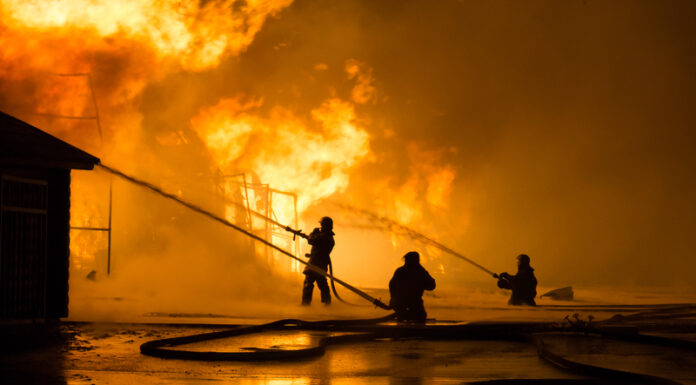A large explosion and subsequent fire occurred at the Shahid Rajaei port in southern Iran on Saturday, April 26, 2025, resulting in the deaths of at least 70 people and injuries to over 1,000 more, according to Iranian officials. The incident took place at Iran’s largest commercial port, located near Bandar Abbas.
Helicopters and aircraft worked overnight to douse the fire, which continued to burn into Sunday morning, while emergency teams attempted to bring it under control. Provincial Governor Mohammad Ashouri announced three days of mourning in response to the catastrophe. State television reported that port operations resumed by Sunday, with footage showing containers being unloaded from a commercial vessel.
The cause of the explosion is still being investigated, with Iranian authorities citing negligence. Interior Minister Ahmad Vahidi described the explosion as resulting from “negligence, including noncompliance with safety precautions.” The Customs Administration of Iran attributed the blast to a stockpile of hazardous goods and chemicals stored at the port, though specific details were not provided.
According to private security firm Ambrey, the port had received a shipment of ammonium perchlorate from China in March, a chemical used in missile propellant. Ambrey reported that improper handling of solid fuel intended for Iranian ballistic missiles led to the fire. Ship-tracking data analyzed by The Associated Press showed one of the vessels carrying the chemical was near the port in March.
Iranian Defense Ministry spokesman Gen. Reza Talaeinik refuted these claims on Sunday. “No sort of imported and exporting consignment for fuel or military application was (or) is in the site of the port,” he stated to state TV by phone, dismissing foreign reports about missile fuel as “baseless.”
Satellite images revealed two large craters at the port site, demonstrating the explosion’s power. Verified videos analyzed by CBS News partner network BBC News showed a growing fire before the explosion. The blast was felt and heard up to 31 miles away, with social media videos depicting broken glass from buildings miles from the epicenter.
An eyewitness recorded the moments leading up to the explosion, warning others. “Get back, get back! Tell the gas truck to go! Tell him to go, it’s going to blow up! Oh God, this is blowing up! Everybody evacuate! Get back! Get back!” the individual can be heard saying in video footage posted on YouTube.
Iranian President Masoud Pezeshkian visited the site on Sunday, where containers were seen smashed or scattered.
Pir Hossein Kolivand, head of Iran’s Red Crescent society, reported that of the approximately 1,000 injured, only 190 remained hospitalized by Sunday. The crisis management director indicated the firefighting effort was nearing completion by Sunday afternoon, with the fire reportedly under control.
According to the Customs Administration, the cargo that ignited had apparently not been registered or formally declared before the incident.
The governor estimated that about 5.8 square miles of the port area were significantly impacted. The Shahid Rajaei port is a crucial economic hub for Iran, handling around 70% of the country’s goods.
Concerns have been raised about why such potentially hazardous materials were stored at a civilian port, especially after the 2020 Beirut port explosion, which was caused by the ignition of large quantities of ammonium nitrate, resulting in over 200 deaths and over 6,000 injuries.
The explosion occurred as Iran and the United States met on Saturday, April 26, in Oman for the third round of negotiations on Tehran’s nuclear program. Although no one in Iran has directly suggested the explosion was an attack, Iranian Foreign Minister Abbas Araghchi acknowledged earlier in the week that “our security services are on high alert given past instances of attempted sabotage and assassination operations designed to provoke a legitimate response.”
The Shahid Rajaei port has been targeted in the past. In 2020, a cyberattack linked to Israel targeted the site, following Israel’s report of preventing a cyberattack on its water systems, which it attributed to Iran.
Located about 650 miles southeast of Tehran, the Shahid Rajaei port is on the Strait of Hormuz, the narrow entrance to the Persian Gulf through which 20% of global oil trade passes. The port’s strategic significance has raised concerns regarding the explosion’s potential effects on regional trade and security.
As investigations continue, authorities have reportedly identified and summoned some individuals believed to be responsible for the negligence that led to the explosion. The incident has sparked mourning and anger among locals over safety measures at the vital port facility.








